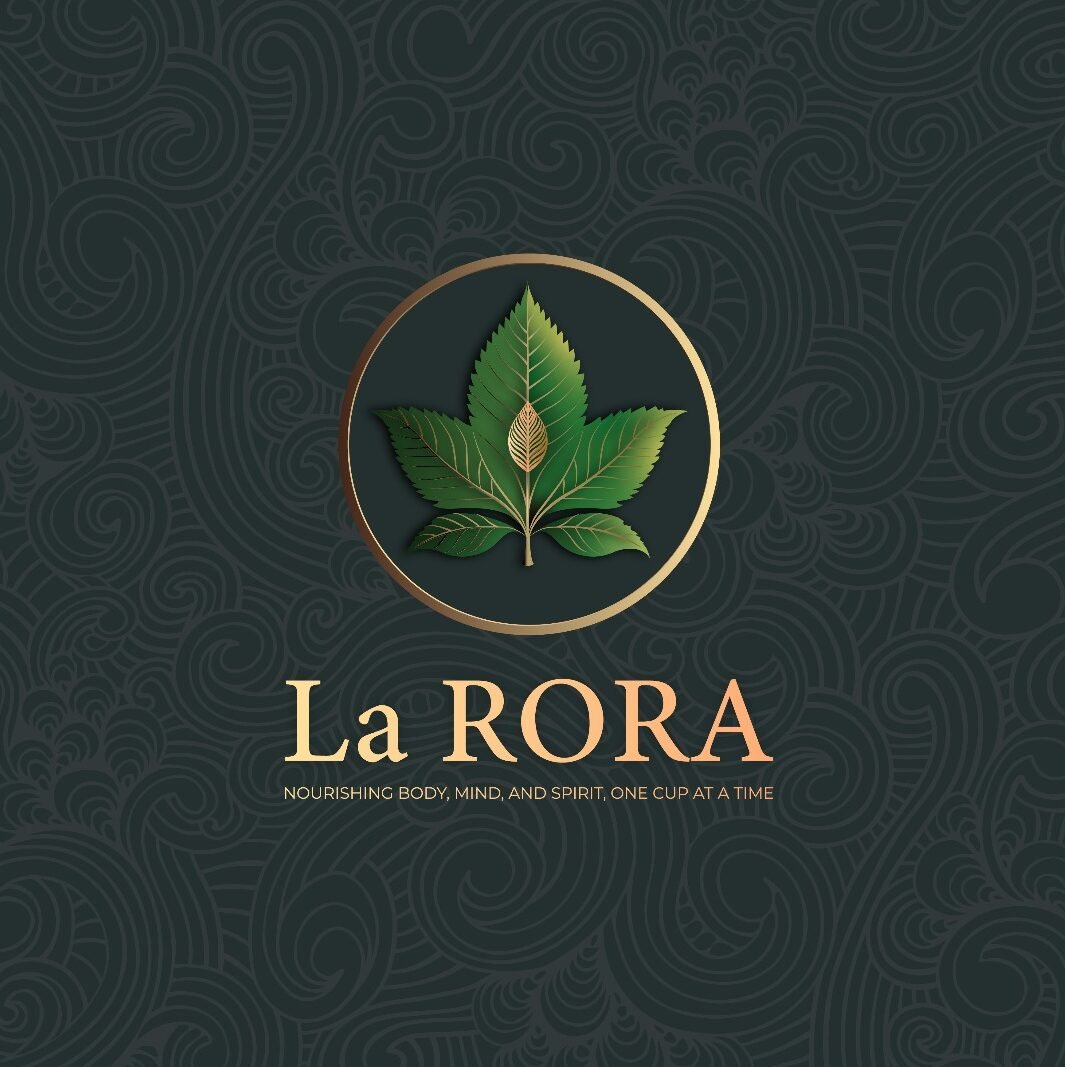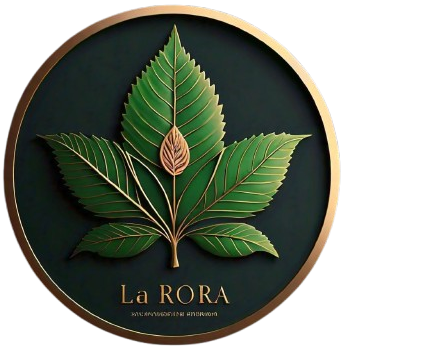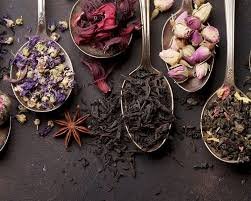Blog: Blog
The Tea House Blog
Where it all begins: Linton Tea -Crafting Excellence in Every Sip
Established in 2003 as a humble family enterprise, Linton Tea has flourished into a beacon of quality and tradition in the world of tea. With a steadfast commitment to excellence, we have proudly steered the trajectory of our esteemed brands, ‘K&K’ and ‘Olinton’, through a journey of growth and distinction.
Rooted in Tradition, Steeped in Quality
Linton Tea honors the time-honored orthodox methods of tea production, ensuring that each cup encapsulates the essence of Ceylon’s rich tea heritage. Our teas, meticulously crafted from the finest two leaves and a bud, bear testament to the unparalleled quality born from the unique terroir, climate, and soil composition of Sri Lanka. With tea estates nestled in the heart of Ratnapura, within the illustrious Sabaragamuwa province, we find ourselves amidst a landscape renowned for its precious gems and iconic landmarks, including the revered Adam’s Peak.
Embracing Excellence
Embracing a culture of excellence, we meticulously adhere to ISO standards and good manufacturing practices in the production of our teas. From the bustling floors of the Colombo Tea Auction, the world’s largest, we source only the finest teas, ensuring a selection that captivates the palates of tea connoisseurs worldwide.
Our Commitment to Quality
Certified with ISO 22000:2018, HACCP, and GMP standards, our dedication to quality is unwavering. Our state-of-the-art warehouse, constructed in accordance with ISO guidelines, boasts the capacity to house approximately 50 tons of tea, safeguarding the freshness and purity of each blend.
Awards and Accolades
Our pursuit of excellence has not gone unnoticed. Linton Tea has been honored with prestigious awards from the Ceylon Industrial Development Board and the Chamber of Commerce, including:
- Gold Award Winner in the National Industry Excellence Awards 2023
- Silver Award Winner in the Sabaragamuwa Province Best Entrepreneur of the Year 2022
- Bronze Winner in the National Industry Excellence Awards 2022
- Bronze Winner in the Sabaragamuwa Province Best Entrepreneur of the Year 2020

The History of Ceylon Tea Industry: A Rich Legacy of Tradition and Innovation
The history of Ceylon tea is a captivating tale of discovery, innovation, and entrepreneurial spirit. Originating in Sri Lanka, the island once known as Ceylon, the tea industry has grown to become one of the most influential in the world. The story begins in the early 19th century, when British colonists, seeking to develop a new cash crop for the island, transformed Sri Lanka into one of the world’s largest tea exporters. Today, Ceylon tea remains a symbol of quality, renowned for its distinct flavor and aroma.
The seeds of the Ceylon tea industry were planted in 1824, when the British brought tea plants from China to Sri Lanka. However, it wasn’t until 1867 that the first successful commercial tea plantation was established. James Taylor, a Scottish planter, is often regarded as the pioneer of Ceylon tea. He established the first tea plantation at Loolecondera in the central highlands of Sri Lanka. Taylor’s vision and commitment to cultivating tea led to the establishment of the island’s first significant tea industry. His expertise in processing and marketing tea laid the foundation for what would become a thriving industry.
In the early years of the tea trade, Ceylon tea faced numerous challenges, including difficult terrain, unpredictable weather, and an unfamiliarity with large-scale production. However, with perseverance and innovation, tea cultivation in Sri Lanka expanded rapidly. By the 1870s, the island began exporting tea in large quantities. The establishment of plantations such as Glenloch (1867) and Dunsinane (1869) marked key milestones in the development of Ceylon’s tea estates. These plantations played a significant role in the production of high-quality tea that would soon be in demand across the globe.
By the turn of the 20th century, Ceylon tea had gained international recognition for its exceptional quality, flavor, and aroma. The industry’s success was largely due to advancements in processing methods and the growing expertise of local planters. The development of mechanical tea plucking, the introduction of steam-powered tea rollers, and improvements in packaging and transportation helped Sri Lanka cement its position as a leader in the global tea trade. In the years following, the plantation system was further developed, with large estates employing thousands of workers, predominantly Tamil laborers who were brought in from India.
The 20th century also saw the rise of some of the world’s most famous tea brands, such as Lipton and Brook Bond, which began sourcing their teas from Ceylon. The reputation of Ceylon tea was further cemented when the country gained independence from Britain in 1948. The establishment of the Ceylon Tea Board in 1952 helped regulate the industry, ensuring quality control and the promotion of Ceylon tea in international markets. In 1972, the country was officially renamed Sri Lanka, but the tea industry continued to flourish under the Ceylon brand, now a mark of distinction in the global market.
Today, Ceylon tea is grown in several regions of Sri Lanka, each known for its unique flavor profiles. From the highlands of Kandy and Nuwara Eliya to the lowland estates of Ruhuna, the legacy of James Taylor and other pioneering planters lives on. Ceylon tea remains a cherished product, and the industry continues to play a vital role in Sri Lanka’s economy and culture. From its humble beginnings to its current status as one of the world’s premier tea producers, the history of Ceylon tea is a testament to the island’s rich heritage and enduring legacy in the world of fine tea.

The Rise of Ceylon Tea in the Early 20th Century: Reasons for Its Popularity
Ceylon tea, renowned for its distinct flavor and premium quality, became one of the most popular and sought-after beverages in the world during the late 19th and early 20th centuries. The roots of this global phenomenon can be traced to a combination of factors: the island’s perfect climate for tea cultivation, effective marketing strategies by British companies, and the increasing global demand for tea during the period. This article explores the reasons behind Ceylon tea’s rise to prominence and why it was consumed most widely across the globe at the time.
A Fertile Land and Ideal Climate
Ceylon, known today as Sri Lanka, has a diverse topography that lends itself perfectly to tea cultivation. Its highland areas, particularly in regions like Kandy, Nuwara Eliya, and the central hills, offered a cool, misty climate, rich soil, and ample rainfall—all key ingredients for growing high-quality tea. The island’s tea-growing regions are also located at high altitudes, which means the plants grow slowly, producing leaves with more concentrated flavors.
The discovery of tea’s potential in Ceylon occurred during the late 19th century, after the collapse of the coffee industry due to a series of blights and diseases. British planters, who had established coffee plantations in the island’s highlands, shifted to tea farming. By the 1880s, the island was quickly recognized for producing some of the finest teas in the world, a reputation that was solidified by the early 20th century.
The Role of British Companies in Promoting Ceylon Tea
British companies played a pivotal role in transforming Ceylon tea into a global commodity. The most influential of these was the British-owned Colombo Commercial Company, which helped expand tea plantations and promote the product worldwide. British tea companies began establishing an infrastructure for production and export, ensuring that Ceylon tea was available in major tea-drinking markets around the world.
One of the most significant marketing strategies that helped Ceylon tea gain popularity was the use of brand names and clever advertising. By the early 1900s, British tea merchants began branding their Ceylon teas under names that became synonymous with quality. Companies such as Lipton, Brooke Bond, and Twinings led the charge, using aggressive advertising campaigns to create a strong global demand for their Ceylon teas.
Branding and Packaging Innovations were also crucial in the success of Ceylon tea. Tea was sold in distinctive packaging, and the use of elegant and appealing designs helped elevate the perception of Ceylon tea as a luxury item. In addition, British companies took advantage of the growing trend of international trade and marketing, creating a worldwide distribution network that made Ceylon tea available in markets as far-flung as the United States, Europe, and the colonies of the British Empire.
Global Consumption: Ceylon Tea’s Popular Markets
By the beginning of the 20th century, tea drinking had become a deeply entrenched ritual in many parts of the world, particularly in the United Kingdom and the British Empire. Ceylon tea, with its refined flavor profile and consistency, quickly became the preferred tea for many consumers. In Britain, where tea was already a national beverage, Ceylon tea was seen as a superior product due to its distinctive characteristics—its briskness, bright color, and strong flavor.
The British Empire’s global reach also contributed to the widespread consumption of Ceylon tea. British colonies, including India, Canada, Australia, and South Africa, were major consumers of Ceylon tea. In fact, the tea was especially popular in the Indian subcontinent, where the British had a long-standing cultural influence, despite the fact that India itself was also a major tea producer. In these colonies, Ceylon tea was associated with British colonial rule and became a staple in many households.
Ceylon tea was also gaining popularity in other parts of the world during this period. In the United States, the demand for tea had been growing steadily since the 19th century, and by the early 20th century, Ceylon tea had carved out a significant niche. In Europe, particularly in Germany, France, and Russia, the premium quality of Ceylon tea made it a favorite among aristocrats and tea connoisseurs.
Conclusion: The Enduring Legacy of Ceylon Tea
The combination of ideal growing conditions, effective marketing strategies by British companies, and a global demand for quality tea made Ceylon tea a household name by the early 20th century. From the heart of Sri Lanka’s hills to the teapots of Britain, Europe, and beyond, Ceylon tea became synonymous with quality, luxury, and refinement.
While the tea industry in Sri Lanka has evolved over the years, the legacy of Ceylon tea remains strong. The reasons for its popularity in the early 20th century—its exceptional quality, the efforts of British tea companies, and the global demand for tea—were pivotal in making Ceylon tea one of the world’s most beloved beverages.
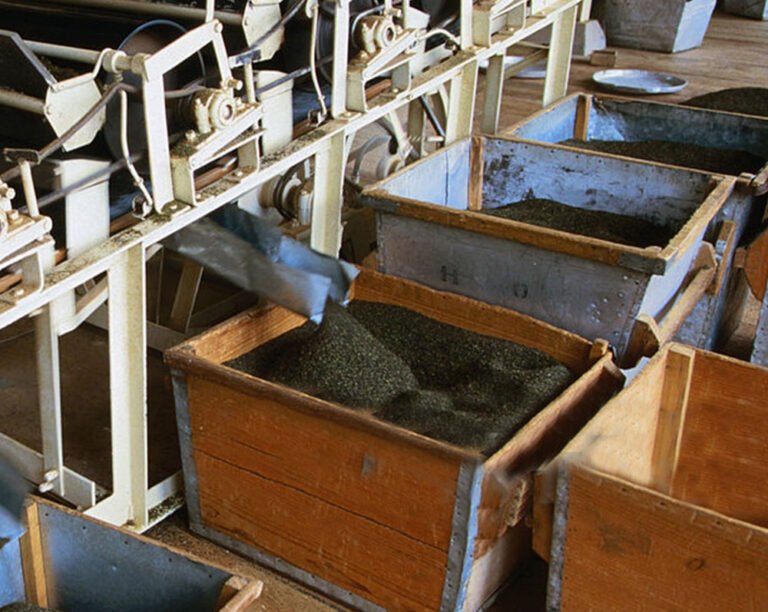
The Journey of Sri Lankan Tea: From Plucking to Packaging
Sri Lanka, known for its world-renowned Ceylon tea, produces some of the finest tea in the world. The country’s tea industry is a blend of rich tradition, careful craftsmanship, and innovative techniques. The process of transforming the humble tea leaf into a cup of aromatic tea is a fascinating journey that involves a series of meticulous steps, from plucking the leaves to packaging the final product. In this article, we’ll take you through the entire tea manufacturing process in Sri Lanka.
1. Plucking the Tea Leaves
The journey of Sri Lankan tea begins in the lush, green highlands of the island. Tea plants grow in various regions, each producing a distinct variety of tea. These regions include the central hill country, with districts like Nuwara Eliya, Kandy, and Kegalle, known for producing high-quality teas.
Plucking the tea leaves is the first crucial step in the process. Only the top two leaves and the bud are handpicked, as they contain the most flavor and aroma. This is usually done early in the morning, as the leaves are fresh and still cool. The skill of the pluckers plays a vital role in ensuring that the leaves remain intact and free from damage.
2. Withering: The First Step in Transformation
Once the leaves are plucked, they are transported to the tea factories, where the next crucial step begins — withering. Withering is the process of removing excess moisture from the leaves to make them pliable for further processing. Freshly plucked leaves contain about 75-80% water, which must be reduced to around 60% for the next steps in manufacturing.
In Sri Lankan tea factories, withering is done in large, flat trays where the leaves are spread out and gently dried by blowing warm, dry air over them. This step is essential for ensuring the leaves retain their natural enzymes, which are responsible for the distinctive aroma and flavor profiles of the tea.
3. Rolling: Breaking the Leaf’s Cell Walls
After withering, the next step is rolling, which helps break down the cell walls of the tea leaves and releases the essential oils and juices. This step is crucial for developing the flavor and aroma that is characteristic of Ceylon tea.
The rolling process is done using a variety of mechanical rollers or by hand, depending on the type of tea being produced. The leaves are rolled in different shapes and forms depending on whether they will be used for black, green, or oolong teas. The most common type of rolling used in Sri Lanka is known as CTC (crush, tear, curl), which is often used for producing black tea.
4. Fermentation and Oxidation: Building Flavor
Next, the leaves undergo fermentation or oxidation. This step is what transforms the green leaves into black tea. The enzymes in the leaves react with oxygen, causing the leaves to change color from green to dark brown or black. The length of time the leaves are left to oxidize plays a crucial role in determining the final flavor profile of the tea.
In Sri Lanka, black tea is typically allowed to oxidize for several hours, depending on the desired flavor. The leaves are spread out in a controlled environment, where temperature and humidity are carefully monitored to ensure that the oxidation process occurs evenly.
5. Drying: Locking in the Flavor
Once the leaves have fully oxidized, the next step is drying. This step halts the oxidation process and locks in the flavors and aromas of the tea. The leaves are passed through large drying machines, or sometimes, they are hand-dried in traditional tea ovens. The leaves are dried at a high temperature to reduce their moisture content to around 3%, making them ready for packaging.
Drying also helps to preserve the shelf life of the tea, ensuring that it maintains its flavor and freshness long after it has been processed.
6. Blending: Crafting the Perfect Cup
After the tea leaves have been dried, they are sorted according to their size and quality. In many Sri Lankan factories, the tea is then blended to achieve the desired flavor profile. Blending is an art form, and it involves mixing different types of leaves from various regions and elevations to create a balanced flavor.
Blending can result in a variety of tea types, including Single Origin teas (which come from a specific region or estate) or Blended Teas, which combine different teas for a unique flavor. Blending is particularly important for maintaining consistency in flavor, ensuring that each batch of tea tastes as good as the last.
7. Storage: Keeping the Tea Fresh
Once blended, the tea is carefully stored in large, airtight containers. Proper storage is essential to preserving the tea’s freshness, aroma, and flavor. Tea should be kept in a cool, dry, and dark environment to prevent exposure to heat, light, or moisture, which can cause it to lose its qualities.
Sri Lanka’s tea industry takes great care in ensuring that tea is stored properly until it is ready for shipment. Specialized warehouses are often used to maintain ideal storage conditions, and the tea is regularly inspected to ensure that it meets the highest quality standards.
8. Packaging: Bringing Tea to the World
The final step in the tea manufacturing process is packaging. After the tea has been sorted, blended, and stored, it is ready for the market. Sri Lankan tea is exported all over the world, and packaging is key to ensuring that it reaches consumers in the best possible condition.
Tea is packaged in various forms, including loose leaf, tea bags, and even ready-to-drink bottles. Packaging materials are chosen with care to protect the tea from external factors that could affect its freshness. Airtight seals, foil wrapping, and moisture-proof containers are commonly used to preserve the tea’s flavor and aroma.
In addition to its standard packaging, Sri Lanka also produces premium and specialty teas that are often packed in decorative boxes, making them perfect for gifting.
Conclusion
The tea manufacturing process in Sri Lanka is an intricate and multi-step journey that involves a combination of nature, skill, and technology. From the careful plucking of the leaves to the precise blending and packaging, each stage is essential for producing the rich, flavorful tea that Sri Lanka is so famous for. Whether you enjoy a robust cup of black tea or a delicate green tea, the process behind each cup is a testament to the dedication and craftsmanship that go into making Ceylon tea a global favorite.
The next time you sip a cup of tea from Sri Lanka, take a moment to appreciate the journey that each leaf has taken to reach you.

Exploring the Tea Growing Regions of Sri Lanka: A Journey Through Ceylon’s Finest Brews
Sri Lanka, once known as Ceylon, is one of the world’s leading tea producers. The country’s diverse climate and topography make it an ideal place for growing a wide variety of teas, each with its own distinctive flavor, aroma, and color. The lush hills and valleys of Sri Lanka are home to some of the most prized tea estates globally, and the nation’s teas are celebrated for their quality and uniqueness. This article explores the major tea growing regions of Sri Lanka, highlighting the distinctive characteristics of the teas produced in each area and their international demand.
1. Central Highlands (Kandy, Nuwara Eliya, Kegalle)
Teas Produced: Ceylon Tea (Black Tea)
The Central Highlands of Sri Lanka are the most famous and the largest tea-growing region. The area spans across several districts, including Kandy, Nuwara Eliya, and Kegalle, with elevations ranging from 2,000 to 6,000 feet above sea level.
Nuwara Eliya is often referred to as “Little England” due to its cooler climate, which is ideal for producing delicate and fragrant teas. The teas from this region are typically light in color, with a sweet, floral aroma, and a crisp, clean flavor. The highest-quality Nuwara Eliya teas are sought after by connoisseurs and are often used in premium blends. This area’s high-altitude tea estates produce a bright, refreshing cup of tea, perfect for those who appreciate a more subtle, nuanced brew.
Kandy is another key region in Sri Lanka’s Central Highlands, producing a tea that is more robust and full-bodied than the delicate teas of Nuwara Eliya. Kandy’s climate allows for the production of a bolder tea, which is popular both in Sri Lanka and abroad, particularly in the European and Middle Eastern markets. The tea from Kandy is ideal for creating blends, and it features a rich, malty flavor profile.
Kegalle is another notable district in the Central Highlands, known for its rich, full-bodied teas. The region’s high elevation results in a strong, aromatic brew that retains a certain sweetness, making it highly favored for creating flavored teas.
International Demand: The Central Highlands, especially Nuwara Eliya, is a top choice for high-end markets in Europe, the US, and Japan, where consumers seek premium, aromatic black teas. These regions’ offerings, with their nuanced profiles, are particularly popular among tea aficionados and those in search of exquisite loose-leaf teas.
2. Uva Region
Teas Produced: Ceylon Tea (Black Tea)
Located in the southeastern part of Sri Lanka, the Uva region is known for its distinct tea flavor, which is influenced by the area’s unique weather patterns. The region is often affected by seasonal winds, which give the teas a distinct character and aroma.
Teas from Uva are famous for their bold, full-bodied flavors and characteristic floral notes. Uva teas are known for their smooth, mellow taste and bright amber color. The aroma is often described as sweet and fragrant, with a hint of citrus. These teas are ideal for those who prefer a stronger brew without sacrificing aroma and subtlety.
International Demand: The Uva region’s teas are particularly popular in markets like Russia and the Middle East, where strong, aromatic teas are preferred. The distinctive flavor profile of Uva teas has earned them a loyal following in countries with a longstanding tea-drinking culture.
3. Dimbulla Region
Teas Produced: Ceylon Tea (Black Tea)
Dimbulla, located in the western foothills of the Central Highlands, is another prestigious tea-producing area in Sri Lanka. Known for its warm, temperate climate, Dimbulla’s elevation ensures a rich, aromatic tea that blends the best qualities of both the highland and lowland teas.
Teas from Dimbulla are typically robust, with a rich, malty flavor and a bright color. The tea leaves are large and give a strong, full-bodied brew, often accompanied by a characteristic “astringency” that makes the tea perfect for a brisk, invigorating cup. Dimbulla is also known for its exceptional second flush teas, which are plucked later in the season for a more intense flavor.
International Demand: Dimbulla teas are in high demand in the UK, Australia, and the Middle East. The rich, bold flavor makes them a popular choice for consumers who enjoy a hearty, full-flavored tea.
4. Ratnapura and Sabaragamuwa Regions
Teas Produced: Ceylon Tea (Black Tea)
The southern region of Sri Lanka, particularly Ratnapura and Sabaragamuwa, is known for its relatively lower elevation tea estates compared to the Central Highlands. These areas are ideal for growing tea that is flavorful and aromatic, with an underlying sweetness that makes it especially popular for blending.
Teas from these regions are typically mild to medium-bodied, with a gentle aroma and smooth texture. While they are not as strongly flavored as those from higher altitudes, they are often prized for their smoothness and drinkability.
International Demand: Teas from the Ratnapura and Sabaragamuwa regions are widely used in bulk tea blends around the world. They are commonly found in ready-to-drink iced tea products and are particularly favored in markets in Africa, the Middle East, and Europe.
5. Lowland and Coastal Areas (Galle, Matara, Hambantota)
Teas Produced: Ceylon Tea (Black Tea)
The lowland regions of Sri Lanka, including Galle, Matara, and Hambantota, offer a different flavor profile due to the warmer and more humid climate. These areas are known for producing teas that are light, mellow, and easy to drink. The teas tend to have a gentle flavor with a soft, sweet aftertaste.
The teas from these regions are typically used in mass-market blends or for making refreshing iced teas. The coastal regions have also seen growth in organic and specialty tea production, catering to niche markets interested in ethically produced teas.
International Demand: Teas from these lowland areas are popular in bulk markets, especially in the Middle East, where lighter and more affordable teas are in demand for everyday consumption.
Conclusion
Sri Lanka’s tea-growing regions are as diverse as the teas they produce. From the delicate, fragrant teas of Nuwara Eliya to the bold, full-bodied brews of Uva and Dimbulla, each region offers a unique flavor profile that appeals to tea drinkers around the globe. The international demand for Sri Lankan tea remains strong, with Ceylon tea maintaining its reputation as one of the finest in the world. Whether you’re a tea connoisseur seeking premium blends or someone looking for a refreshing cup of daily tea, Sri Lanka’s tea-growing regions offer something for every palate.
As global demand continues to grow, Sri Lanka’s tea industry remains a key player in the international market, continuing to captivate tea lovers with its diverse and exquisite offerings.

The Hands That Pluck the Finest Teas
Sri Lanka, renowned for its picturesque tea plantations and its world-famous Ceylon tea, owes much of its legacy to the hardworking individuals who pluck the leaves that end up in teacups around the globe. These workers, primarily women, have carried out this labor-intensive task for generations, shaping both the tea industry and the identity of the island itself.
Who Plucks the Tea?
In Sri Lanka’s lush, green hills, the hands that pluck the finest teas belong to women, mostly from rural, working-class backgrounds. These workers, often referred to as “tea pluckers,” are primarily from the Tamil community, with many tracing their ancestry back to Indian laborers brought to Sri Lanka in the colonial era. Tea plucking has long been passed down through generations, and many workers today have ancestors who worked the same plantations under colonial rule.
The role of the tea plucker is essential to the entire tea production process. Their skill in selecting only the youngest and most tender leaves directly impacts the quality of the tea produced. The leaves they pick are the base of Sri Lanka’s prized varieties, from the delicate white teas to the rich, bold black teas. But while the tea itself is world-renowned, the workers behind it are often invisible to the global consumer.
The Nature of Their Daily Work
The work of plucking tea is grueling and demands both physical strength and a deep knowledge of the plants. A tea plucker’s day begins before the sun rises, and it often doesn’t end until late afternoon. They walk for miles, often barefoot, through the plantation’s steep hillsides, carrying large baskets on their backs or using a head strap to hold their baskets while their hands are busy plucking the delicate top two leaves and a bud from each tea plant.
The workers are typically paid by the amount they pluck, making it essential to be both fast and precise. Plucking too many leaves can result in the loss of quality, while plucking too few can result in lower earnings. To ensure the best harvest, tea pluckers must possess an intimate understanding of the plants they tend to, knowing when to pick, which leaves to choose, and how to move efficiently through the plantation.
A tea plucker’s hands move with remarkable speed and precision, honed over years of practice. These women are adept at picking leaves without damaging the plant, maintaining the bush’s future growth. The work requires endurance, as workers often navigate difficult terrain, carrying heavy loads in tropical heat and rain.
A Tradition of Generations
Tea plucking in Sri Lanka is not just a job; it is a way of life, one passed down through generations. Families have worked on the same plantations for decades, with knowledge and techniques handed down from mothers to daughters. In many cases, a young girl’s first experience in the tea fields is alongside her mother or grandmother, learning the skills of the trade from an early age. This practice ensures the continuity of expertise and fosters a deep connection to the land.
Despite the challenging working conditions, many workers feel a deep sense of pride in their work. The tea plantations are not just sites of employment—they are a central part of the cultural fabric of Sri Lanka. The tea pluckers, with their strong sense of community and tradition, are the backbone of the country’s tea industry, and their labor is integral to maintaining the quality of Ceylon tea, which has earned global recognition.
However, the work is not without its challenges. The industry has faced criticism for low wages, poor working conditions, and the often difficult lives of its workers. While many plantations have made strides toward improving the welfare of workers, much remains to be done. Tea pluckers continue to fight for better wages, healthcare, and education for their families.
Conclusion
The hand that plucks the finest teas in Sri Lanka is a symbol of both the island’s rich tea heritage and the hard-working individuals who have sustained it. The tea pluckers, mostly women from rural communities, carry on a tradition that has been passed down through generations, working long hours in demanding conditions to ensure that the world enjoys a cup of tea as exceptional as Ceylon’s. Their labor is often invisible but undeniably vital, and it’s high time that their contribution is recognized and celebrated alongside the world’s finest teas.

Uplifting the Living Conditions of Sri Lanka’s Tea Plantation Workers: Recent Initiatives by Government and Private Sector
Sri Lanka’s tea industry, one of the oldest and most significant contributors to the country’s economy, has long been associated with the struggles of its workforce. Plantation workers, often from marginalized communities, have faced poor working conditions, low wages, and limited access to essential services like healthcare, education, and sanitation. However, in recent years, both the Sri Lankan government and private tea estate companies have initiated a series of reforms aimed at improving the living conditions of workers in these plantations. These initiatives are focusing on key areas such as working conditions, health, education, women’s rights, maternity benefits, equal opportunities, housing, and sanitation.
Improvement in Working Conditions and Wage Structures
One of the primary concerns in the plantation sector has always been the poor working conditions and insufficient wages. In response, the government, in collaboration with private estate owners, has introduced reforms aimed at ensuring better remuneration and improved working environments for plantation laborers. The introduction of minimum wage regulations for plantation workers has seen a positive shift. Tea estate companies are also providing better safety equipment, ensuring adherence to labor laws, and offering regular breaks to enhance worker welfare. Many estates are now focusing on creating more secure and comfortable working environments, where safety and well-being take precedence.
Enhancing Healthcare Access and Maternity Benefits
Health remains a crucial aspect of worker welfare in the tea plantations. Historically, access to quality healthcare for tea plantation workers has been limited, leading to high incidences of preventable diseases. However, with the government’s push for inclusive health reforms, there has been a marked improvement in healthcare facilities available in these areas. Many plantations now have on-site medical clinics staffed with trained professionals, offering workers free consultations and medications. Additionally, maternity health benefits have been a key area of focus. Estate companies are now providing paid maternity leave, healthcare for pregnant women, and regular checkups, ensuring the health and safety of both the mother and the child.
Education and Equal Opportunities for Women and Children
Education has always been a cornerstone for uplifting the socio-economic status of tea plantation workers. In the past, many children of plantation workers struggled to access quality education due to distance, financial constraints, and lack of infrastructure. The government, alongside private tea estates, has taken strides to improve educational facilities for the children of workers. In many areas, schools have been established within or near plantations, reducing the distance children need to travel. Scholarship programs have been launched to support further education for young people from these communities. Additionally, there has been a significant emphasis on empowering women through skill development programs and providing equal opportunities in the workforce, including leadership roles within plantation management.
Women’s Rights and Gender Equality
Women make up a significant portion of the tea plantation workforce, but historically, they have faced discrimination, unequal wages, and limited career advancement opportunities. The government, together with several plantation companies, has introduced policies aimed at enhancing gender equality. These include equal pay for equal work, improved job security for female workers, and measures to eliminate sexual harassment. Furthermore, initiatives to promote women’s representation in decision-making roles within plantation management are underway, breaking long-standing barriers in this traditionally male-dominated sector. These changes have been pivotal in fostering a more inclusive environment for female workers.
Housing and Sanitation Improvements
Perhaps one of the most visible areas of change has been in the provision of better housing and sanitation facilities. Many workers previously lived in overcrowded, poorly maintained housing with limited access to clean water and sanitation facilities. The government and private estates have invested heavily in upgrading housing infrastructure. New housing units with better ventilation, sanitation, and water supply have been constructed. In addition to improving housing, several tea estates have introduced community-level sanitation projects, including waste management and sewage systems, which have drastically improved the overall living environment for plantation workers.
Corporate Social Responsibility (CSR) Initiatives
Tea estate companies have also embraced Corporate Social Responsibility (CSR) initiatives as a way of contributing to the welfare of their workers and the surrounding communities. These initiatives include the provision of clean drinking water, vocational training programs, health awareness campaigns, and the development of community centers. Many companies are also engaging in environmental sustainability efforts, such as promoting organic farming practices, which benefit workers by ensuring safer working conditions and higher product quality. Through these CSR efforts, private estates are making a tangible impact on the well-being of their workers, providing support that extends beyond the plantation gates.
Conclusion
The recent initiatives by the Sri Lankan government and private tea estate companies reflect a significant shift towards improving the living conditions of plantation workers. While challenges remain, the combined efforts in improving working conditions, healthcare, education, gender equality, and infrastructure are slowly but steadily making a difference. As these initiatives continue to evolve, the hope is that the legacy of the tea industry will be one of empowerment and dignity for all workers, particularly the women and children who form the backbone of this vital sector. With continued investment and support, the future of Sri Lanka’s tea plantations could indeed be one of shared prosperity.

The New Tea Drinkers of the World: Trends, Markets, and Cultural Shifts
Tea has always been more than just a beverage; it’s a culture, a tradition, and in recent years, a global trend that’s been experiencing a resurgence in ways we’ve never seen before. While tea-drinking has roots in places like China, India, and the UK, it’s now reaching new, unexpected corners of the globe. Who are these new tea drinkers, and what is driving the growing popularity of tea in today’s world? Let’s explore the emerging trends, shifting regional preferences, and the influence of social media in this ever-evolving global tea culture.
The Rise of the “New Tea Drinkers”
Historically, tea was seen as a staple for specific cultures—whether it was the afternoon tea in Britain, the masala chai in India, or the traditional green tea ceremonies of Japan. But in the last decade, tea has become a truly global beverage enjoyed by younger, health-conscious consumers. Millennials and Gen Z have embraced it in unprecedented numbers, seeing it as a refreshing, healthy alternative to sugary sodas or caffeinated coffee.
What’s driving this trend? A mix of health consciousness, convenience, and social influence. Tea is being marketed as not just a drink, but a lifestyle—a way to detox, boost metabolism, improve mental clarity, and even reduce stress. With increasing awareness of the potential health benefits of tea, from antioxidants to weight management, many are opting for it as part of a balanced, mindful lifestyle.
Global Shifts in Tea Markets
North America: The Boom of Specialty Teas
In North America, tea is rapidly gaining ground. The American tea market, valued at over $13 billion in 2021, is growing steadily, with millennials leading the charge. A significant factor in this growth is the rise of specialty teas such as matcha, oolong, and herbal infusions, which offer more variety than traditional black tea. In particular, matcha has become a popular choice for its health benefits and versatility, showing up in everything from lattes to smoothies and even desserts.
Tea chains and independent shops have begun popping up across cities, catering to a demand for high-quality loose leaf teas, boba tea, and even iced tea concoctions. This growing demand has encouraged both local and international brands to adapt, offering innovative products and expanding their selection of flavored and functional teas. The appeal is clear: consumers are looking for an experience, not just a beverage.
Europe: Reconnecting with Tradition and Wellness
In Europe, the traditional tea-drinking habits are undergoing a revival, but with a modern twist. Countries like the UK, where tea has long been a cultural cornerstone, are seeing a new interest in artisan teas. Younger generations, often more health-conscious than their predecessors, are exploring organic, loose-leaf teas, herbal infusions, and wellness teas aimed at boosting immunity, digestion, and relaxation.
Germany and the Nordic countries have also witnessed an uptick in herbal tea consumption, with people gravitating towards teas made from native herbs like chamomile, peppermint, and elderflower. In these markets, tea is often embraced for its calming, medicinal qualities, particularly in response to the stresses of modern life.
Asia: Innovation Meets Tradition
In Asia, where tea has always played an integral role, the market is seeing a mix of deep-rooted tradition and contemporary innovation. In China, green tea continues to be the most popular choice, with younger drinkers showing increased interest in premium, single-origin teas, such as dragon well and white tea. The rise of online tea sales has made these high-end varieties more accessible to a global audience.
In Japan, the influence of matcha and the global “matcha craze” is undeniable. Matcha cafés and products have surged internationally, especially in places like the U.S. and Europe, and the Japanese tea ceremony is also enjoying renewed interest. But it’s not just matcha—Japan has a rich tradition of tea culture, with unique varieties like sencha, hojicha, and genmaicha gaining traction worldwide.
Latin America: The Emergence of Yerba Mate
In Latin America, yerba mate has long been a beverage of choice in countries like Argentina, Brazil, and Uruguay. However, the global tea trend has spurred international interest in this energizing, herbaceous tea. It’s a favorite among health-conscious consumers, particularly in the U.S. and Europe, where people are discovering its caffeine content, antioxidants, and potential to boost mental focus.
The shift toward yerba mate is part of a larger trend towards South American herbal beverages, with brands like Guayakí making significant strides in global markets. In a world of cold brew coffees and energy drinks, yerba mate offers an alternative with a cultural twist.
Regional Preferences Shaping Tea Culture
Regional preferences for tea vary significantly, influenced by factors like local traditions, climate, and the evolving needs of consumers. In places like the Middle East, tea is traditionally consumed heavily sweetened and served in small glasses, often accompanied by sweets. In contrast, Scandinavian countries are leaning towards lighter, herbal infusions, appreciating the soothing and therapeutic properties of the plants.
In South Asia, where tea is more than a drink but a way of life, chai (spiced milk tea) continues to dominate. However, younger generations are also branching out to newer varieties like bubble tea (boba), which is spreading rapidly across cities in India, Nepal, and Pakistan.
Africa, with its rich tea-growing regions like Kenya and South Africa, is seeing an increased interest in rooibos and other indigenous teas. These teas are gaining popularity not only in their home markets but globally as well, as the demand for caffeine-free, antioxidant-rich beverages grows.
The Influence of Social Media on Tea Culture
Social media has played a huge role in popularizing tea among the younger demographic. Platforms like Instagram, TikTok, and YouTube are filled with influencers and tea enthusiasts who showcase their favorite brews, highlight the health benefits of tea, and even create viral recipes for things like tea lattes, tea cocktails, and bubble tea.
TikTok, in particular, has been a game-changer for tea trends, with hashtags like #TeaTok fueling the discovery of new tea recipes, rituals, and brands. Videos of tea-making techniques, from the perfect pour to intricate matcha whisking, have turned tea preparation into an art form, captivating millions of viewers worldwide.
Moreover, the rise of eco-conscious consumers has led to a growing interest in sustainable tea brands, with many influencers promoting companies that focus on ethical sourcing, biodegradable packaging, and organic farming practices. This aligns with a broader movement towards environmental sustainability, influencing tea-drinking habits across all regions.
Conclusion: Tea for a New Era
The new tea drinkers of the world are reshaping the global tea landscape. They are younger, more diverse, and more health-conscious than ever before. The global tea market continues to evolve, with a blend of tradition and innovation driving its growth. From the rise of matcha and yerba mate to the growing popularity of herbal infusions, tea is not just surviving—it’s thriving in a modern, interconnected world.
With the influence of social media and a renewed appreciation for wellness and mindfulness, tea is no longer just a drink but a lifestyle choice, embraced by people all over the world. As more cultures rediscover and reinterpret tea-drinking practices, there’s no telling just how far this ancient beverage will go. What’s clear, however, is that the global tea revolution is only just beginning.

Health Benefits of Drinking Tea: A Blend of History and Science
Tea has been a cherished beverage for centuries, offering more than just a soothing ritual—it boasts an array of potential health benefits. From ancient traditions to modern-day scientific discoveries, tea has earned its reputation as a powerful elixir. In this article, we’ll explore the historical beliefs surrounding tea and delve into contemporary research that supports its many health benefits.
A Sip Through History
Tea’s story begins in ancient China, where it is believed to have been discovered in 2737 BCE by Emperor Shen Nong. According to legend, tea was born when a leaf from a wild tree blew into a pot of boiling water. Shen Nong, known for his interest in herbal medicine, found that the brew had remarkable properties. Over time, tea became integral to Chinese culture, and its use spread to neighboring countries.
In the early centuries, tea was considered a medicinal drink. Traditional Chinese medicine (TCM) attributed various healing properties to tea, such as promoting digestion, cooling the body, and enhancing mental clarity. In the 9th century, Buddhist monks introduced tea to Japan, where it became an essential part of their meditation practices, reinforcing the connection between tea and mindfulness.
Tea made its way to Europe in the 16th century, where it was initially regarded as a luxury commodity. By the 18th century, tea had become a staple in British culture, symbolizing both sophistication and socialization. While the British were sipping their tea, the Dutch East India Company was trading the precious leaves across the world, laying the foundation for tea’s global popularity.
Modern Scientific Insights: Tea’s Health Benefits
In recent decades, modern science has validated many of the health claims surrounding tea that were once relegated to the realm of folklore. Researchers have conducted numerous studies to explore how different types of tea can benefit the body. While most studies are focused on the various polyphenols, particularly catechins, found in tea, these compounds are believed to be responsible for its health-promoting effects.
1. Antioxidant Properties
Tea, particularly green tea, is rich in antioxidants, which help combat oxidative stress and free radicals in the body. These antioxidants, like epigallocatechin gallate (EGCG), have been shown to protect cells from damage and may play a role in reducing the risk of chronic diseases such as cancer, heart disease, and diabetes.
2. Heart Health
Studies consistently show that tea consumption is associated with a lower risk of cardiovascular disease. The polyphenols in tea have been found to improve cholesterol levels, reduce blood pressure, and improve blood vessel function. Regular tea drinkers may have a reduced risk of heart attack and stroke. A 2020 study published in Heart found that drinking tea, especially green or black tea, was linked to a lower risk of heart disease.
3. Weight Management
Green tea, in particular, has been the subject of numerous studies regarding weight loss and fat burning. The caffeine and catechins in green tea are believed to work together to boost metabolism and promote fat oxidation. While the effect is modest, research suggests that incorporating green tea into a balanced diet may aid in weight management.
4. Improved Mental Clarity and Mood
Tea has long been associated with mental clarity and calmness, and modern research supports these claims. The caffeine in tea, while less potent than coffee, can enhance alertness and focus without the jitters often associated with stronger caffeinated beverages. Additionally, the amino acid L-theanine, found in tea, promotes relaxation and has been shown to reduce stress and anxiety.
5. Gut Health
Recent research also highlights the role of tea in promoting gut health. The polyphenols in tea, especially green tea, have been shown to support the growth of beneficial gut bacteria while inhibiting harmful bacteria. A healthy gut microbiome is linked to improved digestion, a stronger immune system, and even better mood regulation.
Conclusion
Whether consumed for its soothing qualities or its potential health benefits, tea is more than just a drink—it’s a centuries-old tradition backed by modern science. From boosting heart health and aiding in weight management to promoting mental clarity and improving gut health, tea offers a wide array of benefits. As you enjoy your next cup, remember you’re partaking in a ritual that has transcended time, blending ancient wisdom with contemporary evidence.
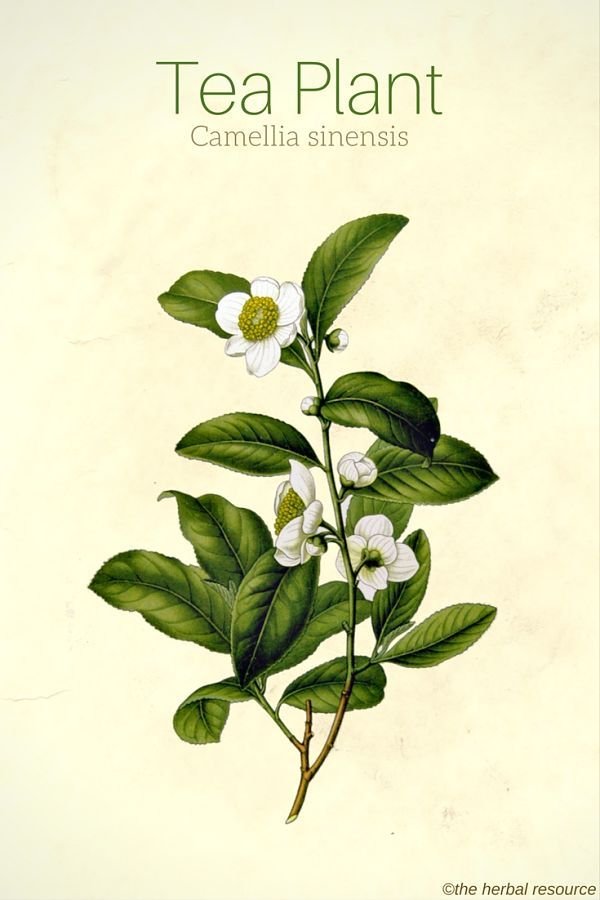
Uses of the Tea Plant: Beyond a Tasty Cup
The tea plant, Camellia sinensis, has long been celebrated as the source of one of the world’s most consumed beverages. However, its applications extend far beyond simply brewing a cup of tea. From culinary delights to medicinal remedies, skincare products, and even modern wellness trends, the tea plant is proving to be a versatile powerhouse in various industries. Here’s an exploration of the many uses of the tea plant in contemporary society.
1. Culinary Uses: A Flavorful Ingredient
Tea has long been an integral part of various cuisines, but recent culinary innovations are pushing the boundaries of how we incorporate tea into our dishes.
a. Tea-infused Dishes
Chefs around the world are experimenting with different types of tea to enhance the flavor profiles of food. Green tea, for instance, is being used in everything from sauces to marinades for meats, while matcha (finely powdered green tea) is a popular ingredient in baking, from cookies to cakes and even ice cream.
b. Tea as a Smoking Agent
Tea leaves are increasingly used as a smoking agent in the culinary world. Black tea, particularly, imparts a rich, smoky flavor to meat, fish, or vegetables when used in smoking techniques. This gives dishes an extra layer of complexity, utilizing the natural oils and flavors found in the tea leaves.
c. Tea-Infused Alcohol
Tea isn’t just for sober enjoyment; it’s also making its mark in the beverage industry. Tea-infused cocktails, such as those featuring oolong, hibiscus, or earl grey, are growing in popularity. The subtle bitterness and complex notes of tea add depth to spirits like gin, whiskey, and rum, offering a sophisticated twist on classic drinks.
2. Tea in Medicine: Nature’s Remedy
The medicinal properties of tea have been documented for centuries. Today, with the rise of alternative medicine and wellness trends, the tea plant is seeing a resurgence in popularity as a therapeutic agent.
a. Antioxidant Power
Tea, particularly green tea, is rich in antioxidants known as catechins. These compounds help neutralize free radicals in the body, potentially reducing the risk of chronic diseases like heart disease, cancer, and neurodegenerative disorders. Regular tea consumption has been linked to improved cardiovascular health, better blood sugar regulation, and even improved brain function.
b. Anti-inflammatory and Immune-Boosting Properties
Herbal teas made from blends like chamomile, ginger, or peppermint are popular for their anti-inflammatory properties. These can help soothe everything from sore throats to digestive issues. Teas with medicinal plants have also been used in traditional remedies to boost immunity and aid in detoxification.
c. Stress Relief and Mental Clarity
Herbal teas made from ingredients like lavender, lemon balm, and chamomile are known to have calming effects, helping to alleviate stress and anxiety. Green tea contains an amino acid called L-theanine, which promotes relaxation without causing drowsiness, making it a go-to choice for people seeking mental clarity and focus.
3. Tea in Cosmetics: Nature’s Beauty Secret
Tea is not just a healthy drink; it’s also a powerful ingredient in skincare and beauty products. With its antioxidant, anti-inflammatory, and antimicrobial properties, tea has become a staple in many beauty routines.
a. Anti-Aging Benefits
Green tea is often used in skincare products for its high content of polyphenols, which help to fight free radicals and prevent the breakdown of collagen. This can lead to a reduction in the appearance of fine lines and wrinkles. Additionally, green tea’s anti-inflammatory properties make it ideal for sensitive skin, reducing redness and irritation.
b. Tea as a Natural Cleanser
Tea has natural cleansing properties, which is why it is used in face washes, toners, and masks. The antioxidants and astringent properties of green tea make it effective for controlling oil production and minimizing pores, while chamomile and lavender tea can soothe and hydrate dry or irritated skin.
c. Tea-Infused Hair Care
Tea is also making its way into hair care products, thanks to its potential to reduce dandruff, stimulate hair growth, and protect against sun damage. Black tea, for example, is often used in hair rinses for its ability to enhance shine and color, particularly in darker hair shades.
4. Tea in Wellness: Mind, Body, and Spirit
Tea’s use in wellness extends beyond its physical health benefits. It is also deeply tied to practices focused on mental, emotional, and spiritual well-being.
a. Mindful Drinking: A Moment of Calm
The ritual of brewing and drinking tea offers a mindful pause in the midst of a busy day. This calming practice has been adopted as a form of meditation, especially with the rise of practices like tea ceremonies in various cultures, including Japanese and Chinese traditions. Drinking tea with intention can promote relaxation and focus, helping people stay grounded in the present moment.
b. Detox and Cleanse
Many people use herbal teas to support detoxification and cleansing of the body. Ingredients like dandelion root, ginger, and peppermint are common in detox teas, which aim to promote digestion, reduce bloating, and flush toxins from the system.
c. Weight Management
Green tea is often marketed for its potential to aid in weight loss, largely due to its ability to boost metabolism and enhance fat oxidation. While drinking tea alone won’t guarantee weight loss, it can certainly complement a balanced diet and exercise regimen.
5. Environmental and Sustainable Uses
In addition to its culinary, medicinal, and wellness applications, tea plants are also being used in sustainable practices. Tea waste, including spent tea leaves and tea bags, is being repurposed in a variety of ways, from composting to creating eco-friendly packaging.
a. Tea as a Natural Fertilizer
Used tea leaves are rich in nitrogen, making them an excellent addition to compost or as a natural fertilizer for plants. They can also be spread directly onto the soil to help retain moisture and improve soil structure.
b. Eco-friendly Packaging
Some companies are exploring innovative uses for spent tea bags and tea plant fibers to create biodegradable packaging, reducing the reliance on single-use plastics. This sustainable practice contributes to reducing the environmental impact of both the tea industry and the broader consumer goods sector.
Conclusion: A Plant with Endless Potential
The tea plant, once considered merely a beverage ingredient, is now recognized for its versatility and multifunctional uses across food, medicine, cosmetics, wellness, and even environmental sustainability. Whether you’re sipping a cup for its health benefits, applying it to your skin for a radiant glow, or experimenting with it in the kitchen, the tea plant continues to enrich our lives in countless ways. Its enduring presence in both traditional and modern practices is a testament to the timeless value of this remarkable plant.
As we move forward, the possibilities for tea’s applications seem boundless, opening doors to innovative products, therapeutic solutions, and sustainable practices that promise to shape industries for years to come. So, next time you take a sip of your favorite tea, remember that it’s not just a drink—it’s a treasure trove of potential with a wealth of benefits waiting to be explored!
